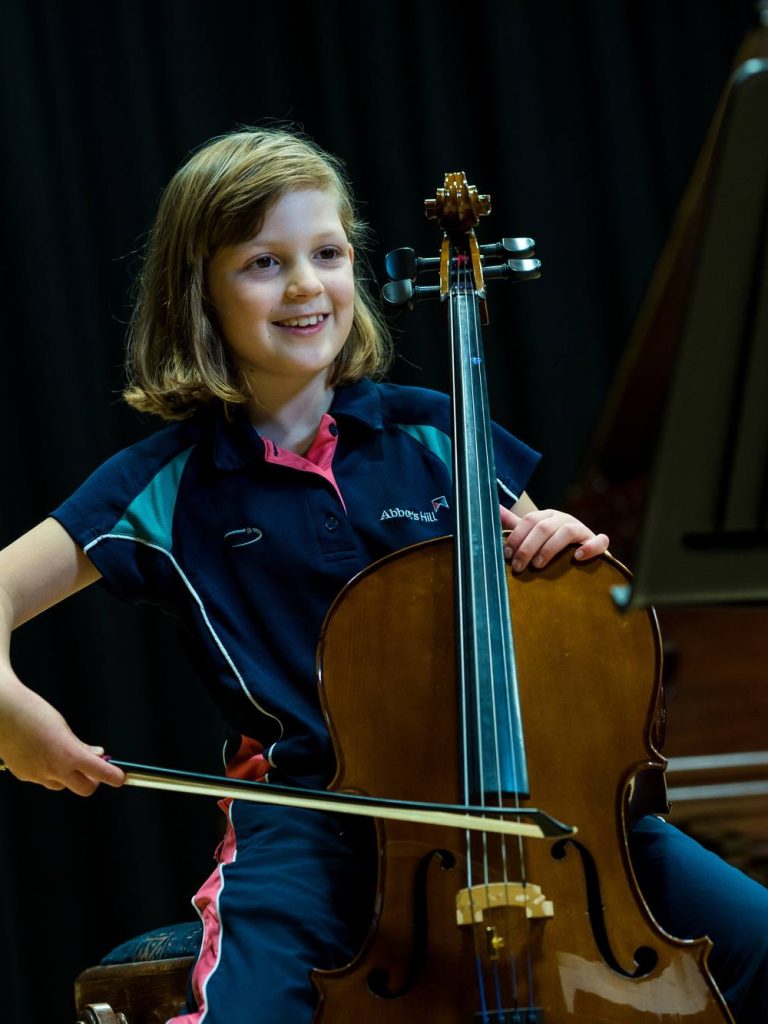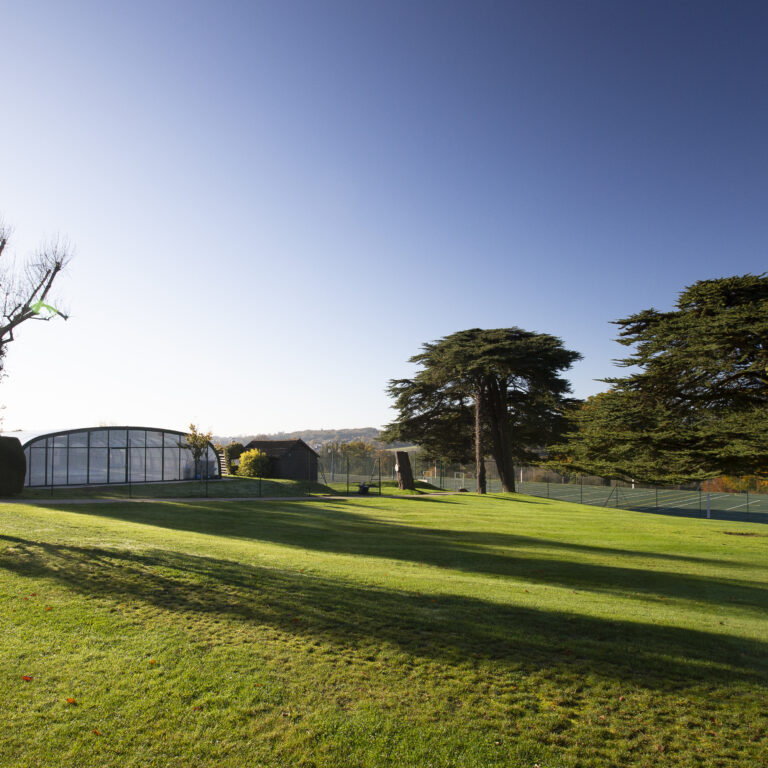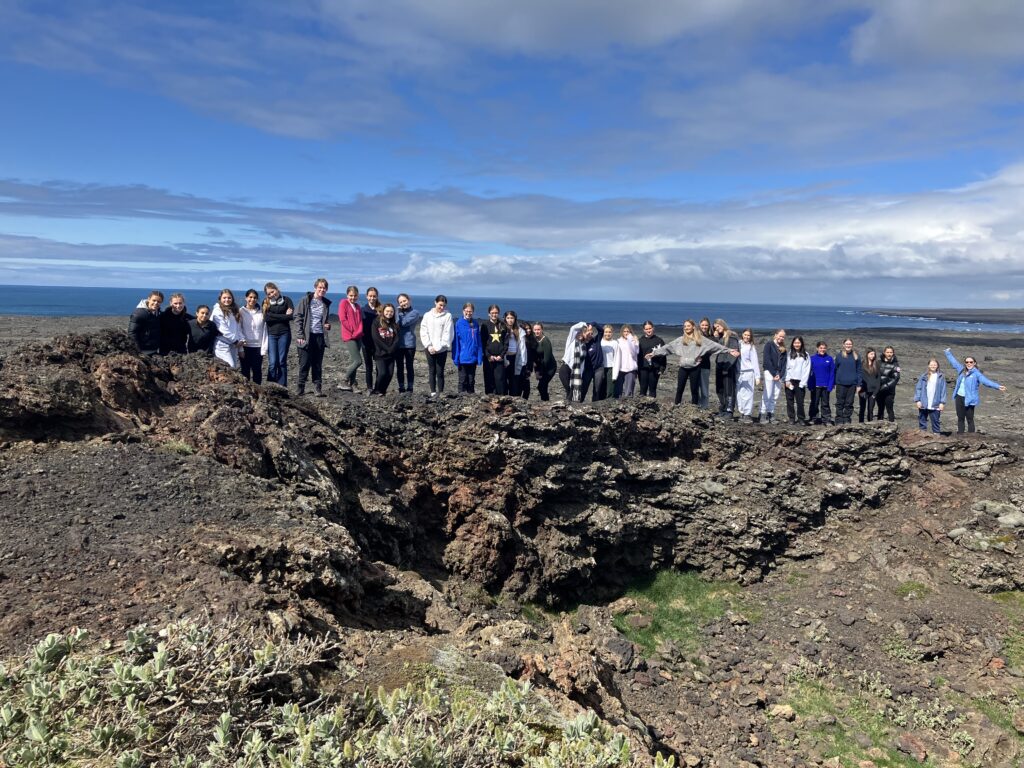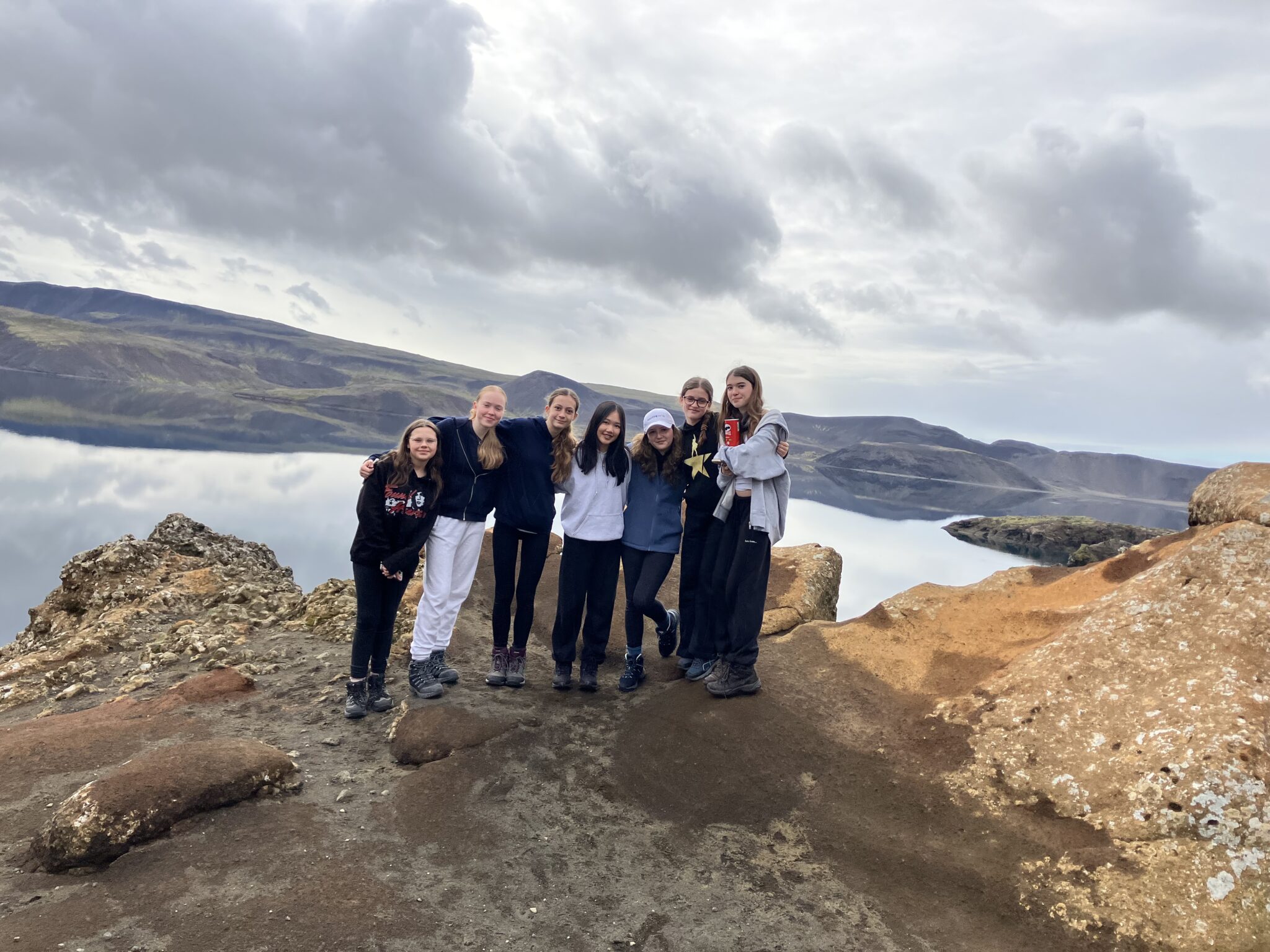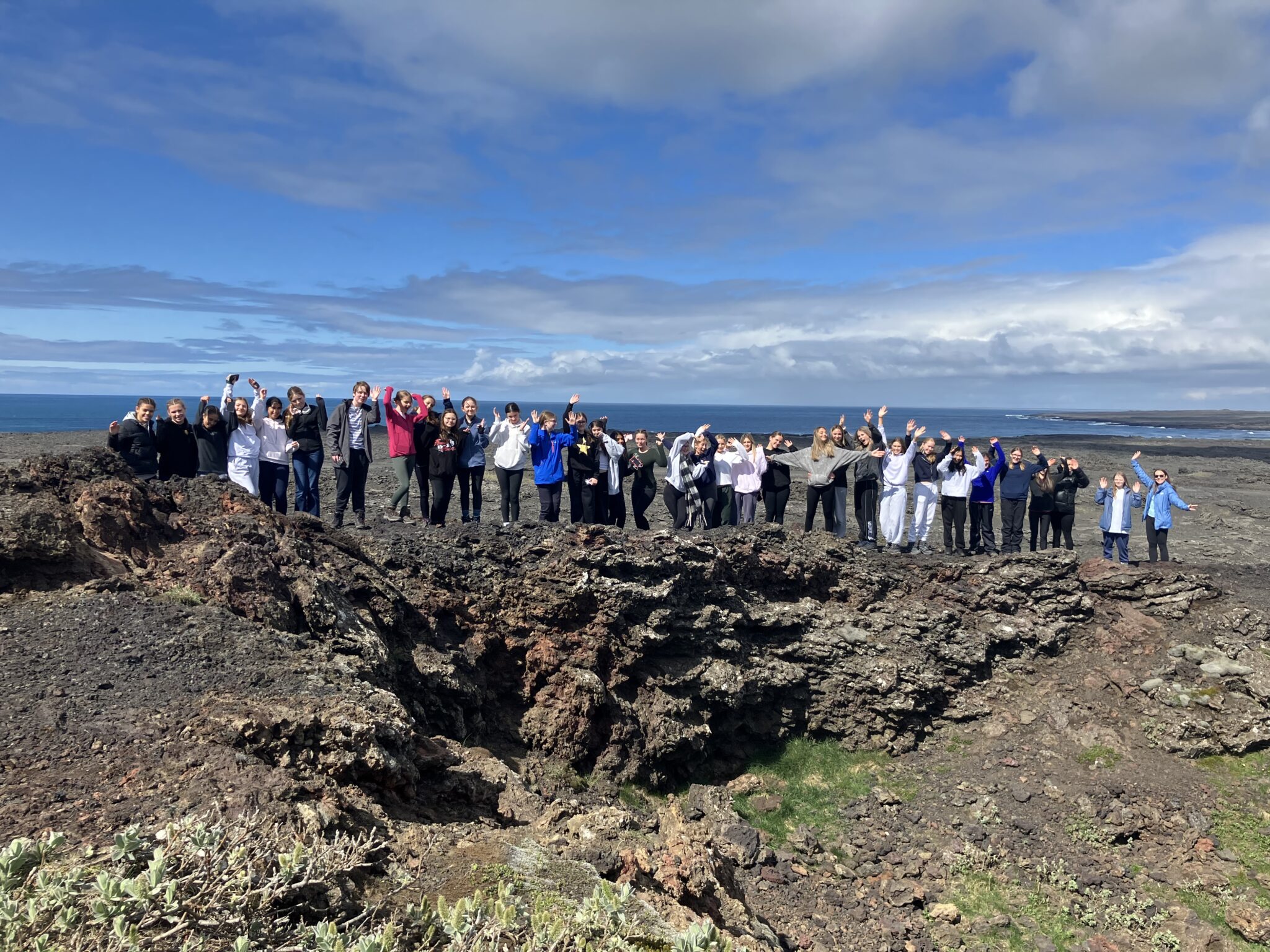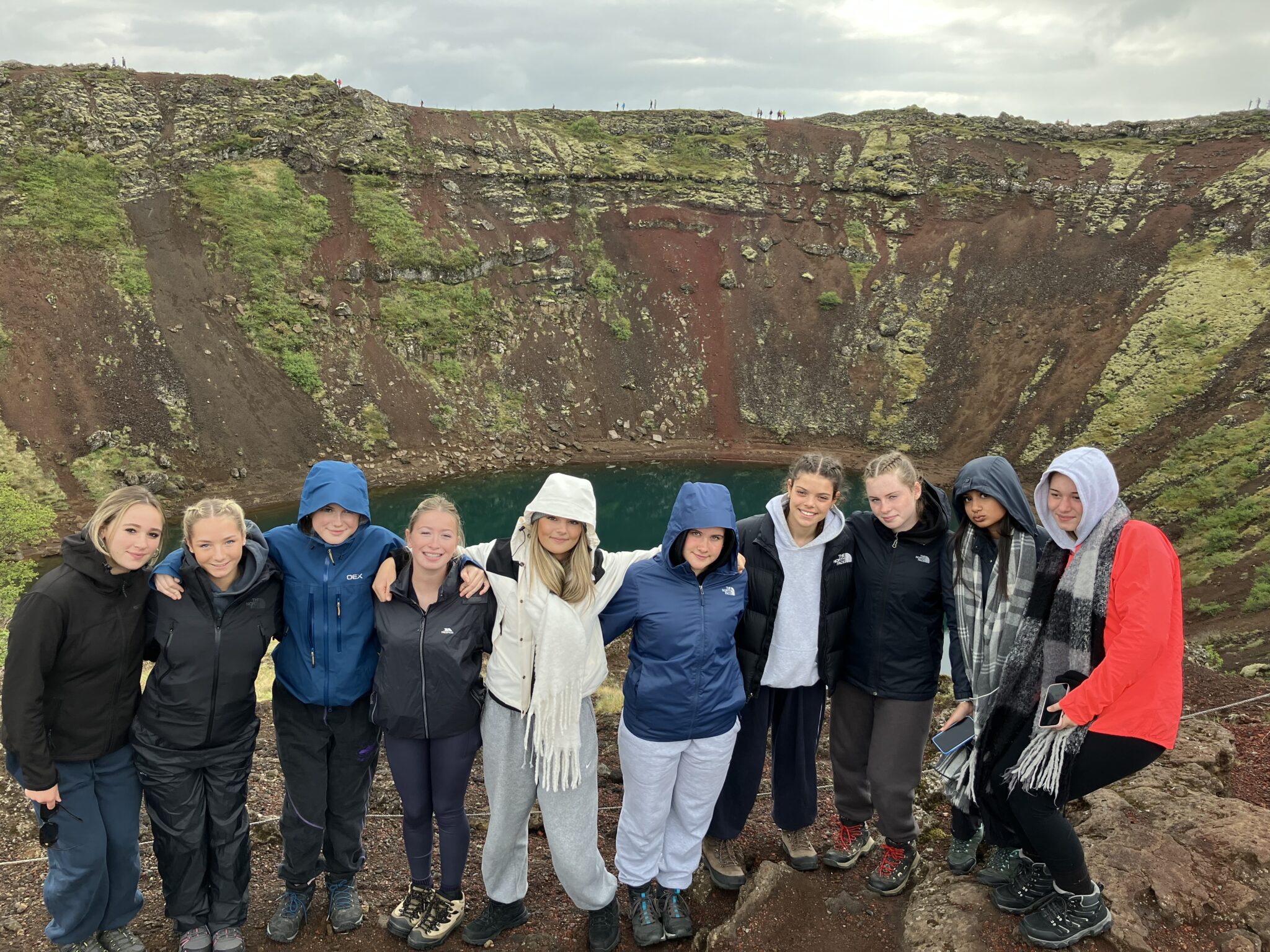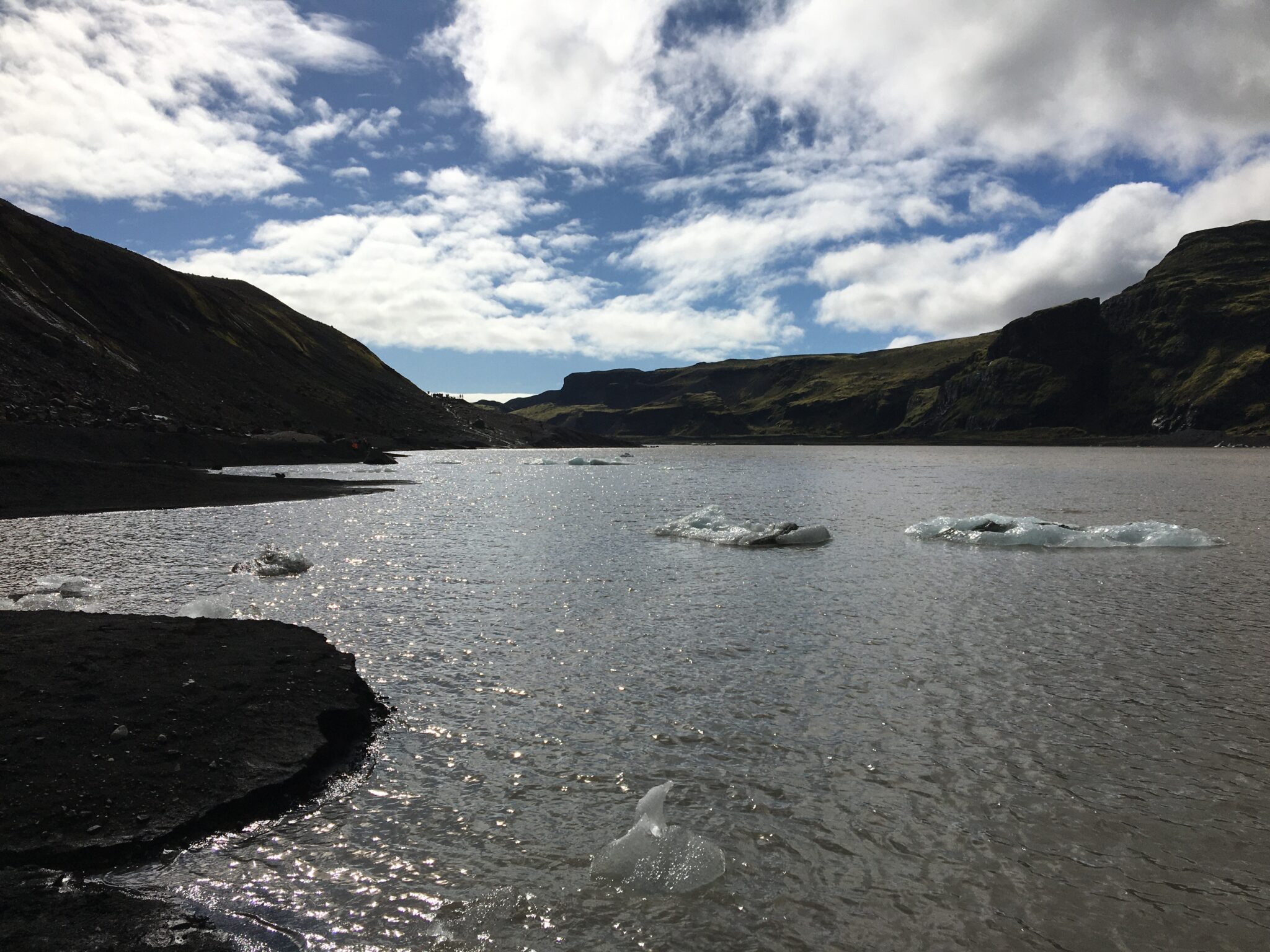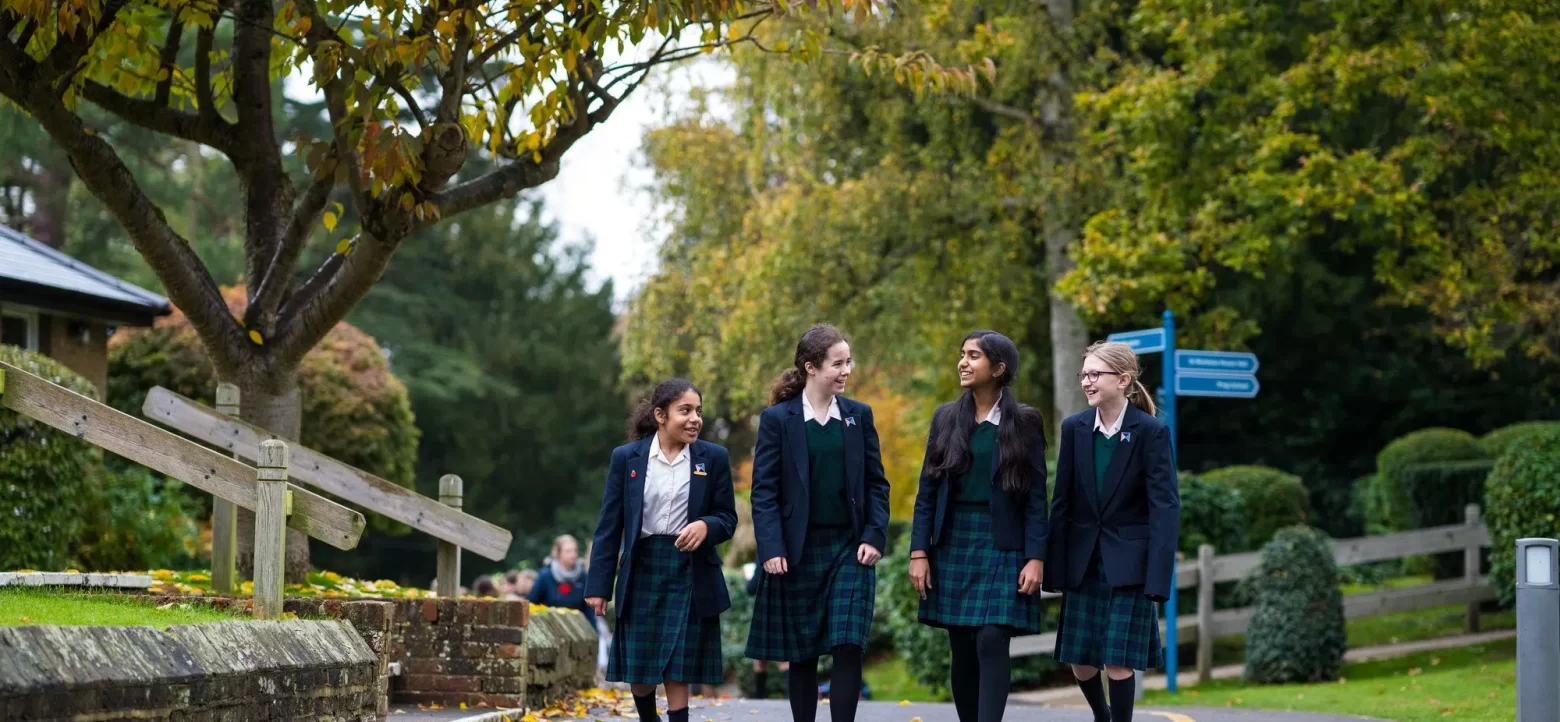Iceland – The Ultimate Geography Classroom
By Orla Reilly, Head of Geography
Over the May Half Term break, a group of Year 9 and 10 geographers headed to Iceland to bring classroom learning to life. Read their account below:
Day 1 – Seljalandsfoss Waterfall, Skógafoss Waterfall, Reynishverfi and Sólheimajökull
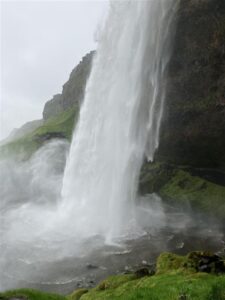
Next, we visited the mighty Skógafoss waterfall, towering over 200 feet high. With climbed the 600 or so steps (not that anyone was counting…) to reach the top. The effort was well worth it—the views from above were simply breathtaking!
From there, we made our way to Reynishverfi, a dramatic black sand beach framed by crashing waves, striking basalt sea stacks, and views of Dyrhólaey, a stunning coastal arch. The students were fascinated by the geological features, showing real curiosity and enthusiasm as they learned about the volcanic origins of the black sand and the powerful coastal processes that shape this landscape. A perfect outdoor geography lesson!
Just when we thought the day couldn’t get any more impressive, the rain cleared just in time for our glacier walk at Sólheimajökull. With crampons securely strapped to our boots and ice picks in hand, we stepped out onto the ancient ice of this glacier tongue. We learned about glacier formation, the impact of climate change, and visible signs of glacier retreat—a powerful and memorable learning experience. One of the highlights? Drinking fresh glacier water straight from the ice—a moment of pure refreshment and awe.
Day 2 – Reykjanes Peninsula, Lake Kleifarvatn, Seltún and Gunnuhver geothermal area, Stampar Volcanic Craters and Reykjavík
Another big day of sightseeing along the Reykjanes Peninsula! Our adventure kicked off at the stunning Lake Kleifarvatn viewpoint. This lake is seriously impressive – it’s the largest on the peninsula and it plunges down 97 meters. The lake sits right on the tectonic boundary where the Eurasian and North American plates meet.
According to Icelandic folklore, Kleifarvatn is said to be home to mysterious creatures, including the “nykur” – a water-dwelling monster that lurks in the depths. Legend has it, the creature might even slither up to the shoreline when students are lurking around… So naturally, we were extra careful while trying to snap that perfect picture!
During the day, we visited not one but two incredible geothermal areas – each with its own wild personality.
Seltún lies on the fissure zone of the Mid-Atlantic Ridge, making it a prime hotspot (literally). The area is packed with solfataras, fumaroles, mud pots, and boiling hot springs.We made our way along the wooden boardwalk that winds through the heart of the field. Steam hissed from vents in the earth, and mud pots gurgled.
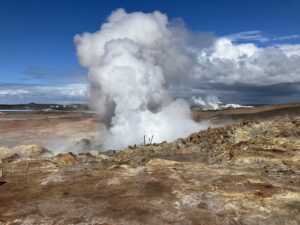
Our journey took us through the town of Grindavík, a place that felt eerily deserted. Once a bustling fishing village, Grindavík has faced significant challenges since a series of volcanic eruptions began in late 2023. The town was evacuated in November 2023 after intense seismic activity. Subsequent eruptions and ground deformation have caused extensive damage. Driving through the town, we were struck by the visible scars left behind — cracked pavements, tilted buildings, and gardens split apart.
Continuing our adventure, we arrived at Stampar Crater, a fascinating site located on a lava field. As we made our way to the top, the landscape transformed into something resembling the surface of Mars — vast stretches of blackened lava fields as far as the eye could see.
This place sparked some intriguing questions among us: Could it erupt while we’re here? Fortunately, we learned that Stampar last erupted between 1210 and 1240, during the Reykjanes Fires — a period of significant volcanic activity on the peninsula.
Our journey then led us to one of the most extraordinary sights of the day: the Bridge Between Continents.
It probably seems impossible to walk from Europe to North America within a matter of seconds – but we did! The Bridge Between Continents is a 15-metre footbridge that spans a dramatic rift between the Eurasian and North American tectonic plates.
Standing here, it’s surreal to think you’re literally straddling two continents. As visibility was good, we could see all the way to Eldey Island, rising starkly from the ocean. The island, home to thousands of seabirds, stood out sharply against the horizon.
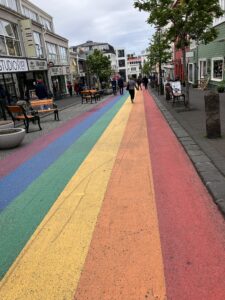
Our first stop was Reykjavík City Hall, where we explored the exhibition hall and admired the large relief map of Iceland. The group easily identified the places we’ve visited over the past few days – with the glacier standing out as a particular highlight.
We explored Miðbær, Reykjavík’s central district, stopping by Alþingi, the Icelandic Parliament, and passing the historic Houses of Parliament.
Along the way, we discovered the many sculptures dotted across the city – each with its own story and artistic flair. Reykjavík’s public art scene really brings its streets to life. We continued on to Hallgrímskirkja, the largest church in Iceland, its striking design inspired by basalt lava flows.
After a bit of shopping along Lækjargata Street, we couldn’t help but admire the wonderful murals and creative street art that decorate the walls and alleyways.
As the day wound down, a very tired but happy group made our way back to the hotel along the coastal path, passing the iconic Sun Voyager sculpture.
Day 3 – The Golden Circle

We continued our journey along the Golden Circle, and as we made our way to the next stop, we were surrounded by a landscape alive with steam billowing from numerous hot springs. Our guide shared a brilliant story: during a seismic event in the geothermal town of Hveragerði, a fissure opened beneath someone’s home – and they woke up to find a hot spring bubbling in their living room!
We didn’t think we could top yesterday’s crater hike, but the Kerið Crater proved us wrong. This striking, 6,500-year-old volcanic caldera is one of the most photogenic spots in southern Iceland. It’s around 55 metres deep and 170 metres wide, with steep red volcanic walls and a brilliant blue lake in the centre. We hiked along the rim, taking in the panoramic views, and then descended all the way down to the lake’s edge.
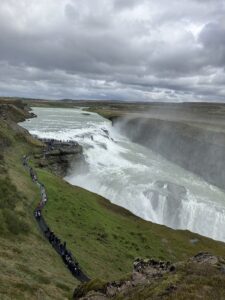
As we drove to our next stop, our guide shared some fascinating facts about Iceland’s birdlife. Puffins, perhaps Iceland’s most iconic bird, are a common sight here during the summer. Interestingly, they migrate south to the UK for the winter, often as far as the English Channel. We also learned that puffins lose the bright colouring of their beaks during the winter months, and regrow it for the breeding season.
Another incredible bird we heard about is the Arctic tern, which holds the world record for the longest migration. These tiny birds fly all the way to Antarctica and back each year – a staggering up to 44,000 miles annually! Even more fascinating, Arctic terns can shut down half of their brain while flying so they don’t become too tired on their journey.
No trip to Iceland would be complete without a visit to one of its most iconic natural wonders: the Great Geysir. In fact, did you know the word “geyser” itself comes from this very spot? Named after Geysir, the original hot spring that gave its name to all others!
There was great excitement as we gathered to witness Strokkur, the area’s most active geyser, erupting every 5–7 minutes. While the first spout was a little shy, the second blast shot high into the air, sending up a towering column of steam and water. There were gasps all around – it really was a spectacular moment!
Next, we travelled to Hrafnagjá, where we stood right at the edge of the Eurasian tectonic plate. Having stood at the North American plate edge yesterday, it was incredible to now see the opposing side and understand just how this island is being pulled apart. The landscape here is dramatic, with visible rifts and cracks that tell the story of the Earth’s slow but powerful movement.
Our final stop was the breathtaking Þingvellir National Park. This UNESCO World Heritage site is not only geologically fascinating – it sits right on the mid-Atlantic ridge, where the Eurasian and North American plates meet – but it’s also historically significant. It was here that Iceland’s first parliament was established over 1,000 years ago. The canyon running through the park made for a stunning walk.
Although it’s been a jam-packed itinerary, we managed to squeeze in a final treat: a visit to the Laugardalslaug Geothermal Swimming Pool. After days of hiking, exploring, and braving the elements, relaxing in the warm waters under the Icelandic sky was the perfect way to unwind and reflect on our journey.
